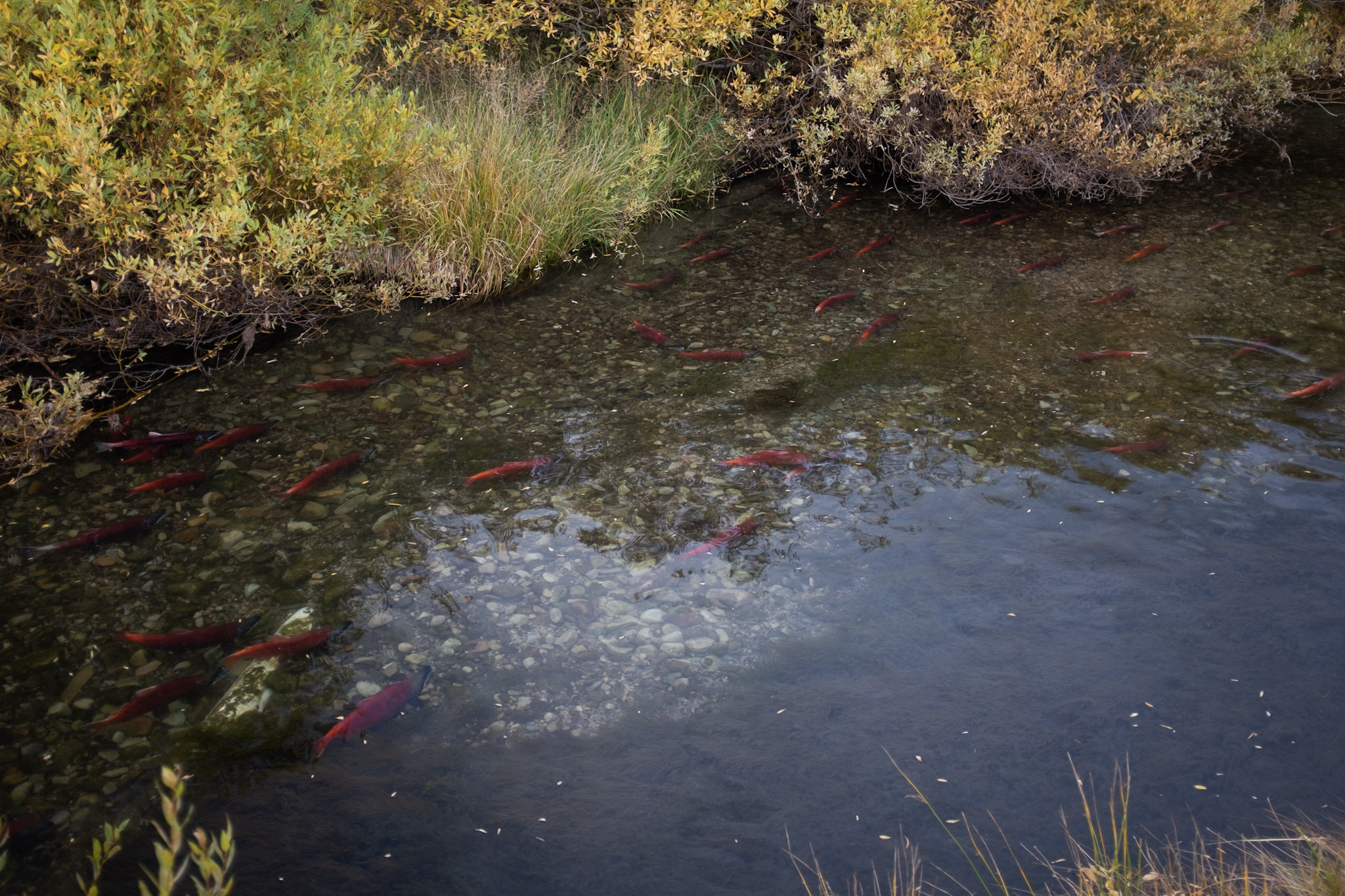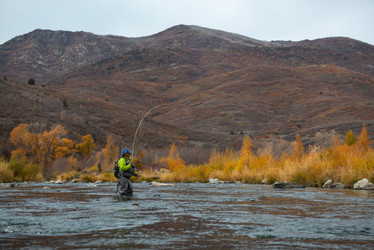The Fall-Winter Fishing Season: What to Expect and Plan For
Posted by Nick Teynor on Oct 30th 2025
Fall fishing is in full swing around the state. From fishing to educated trout with tiny dry flies, to stripping streamers for large, aggressive trout in lakes and reservoirs, the fall season offers a little bit of everything for the angler who is prepared for a variety of techniques. To be clear, I will be focusing on techniques that will not target, or deal with fishing to or around spawning brown trout. We at the shop condemn targeting ANY spawning fish because it’s an unsustainable fishing practice that jeopardizes the immediate and long-term health of our fisheries. We have written a handful of blog posts about the importance of leaving spawning fish alone, and if you would like to learn more about why we do so, you can check out the most recent blog post about not fishing to spawners with the link I’ve provided here.
If you still want to fish our local waters, which are full of brown trout, but do it in a more responsible manner, you’ll need to watch out for the brown trout redds to avoid stepping on their eggs, and avoid fishing to actively spawning fish. You’ll also need to focus on fishing the deeper holes and pools with streamers, nymphs, and dries since most if not all actively spawning fish will be in the pool tail-outs and riffles where there is pea sized gravel. When we at the shop fish the local tailwaters this time of year, we focus on fishing the deep holes and pools with soft hackles, and look for fish sipping dry flies, since there is a lower chance of negatively impacting the spawn. Now that we’ve laid out some guidelines on how to fish responsibly in the Fall, I’d like to start this post off by focusing on the Fall aquatic insect hatches that get us excited to get on the water.
Blue-Winged Olive Mayflies and Midges
By the time late October rolls around here in the Intermountain West, the aquatic insect food options for the local trout are fairly limited to Blue-Winged Olive (B.W.O.) Mayflies, and Midges. Sure, there may be the occasional October Caddis or left-over terrestrial (ants, beetles, crickets, grasshoppers) around if the weather stays warm. However, it’s the daily hatches of Blue Winged Olives mayflies and Midges that the trout will key on for literally the rest of the year. In order to make sure you’re fishing the proper bug at the proper time, it’s important to have a basic understanding of both aquatic insects' lifecycles, and how the weather and water/air temperatures affect them. First up on the hatch menu, the tiny but vital Midges.
Midges virtually hatch every day of the year, are eaten at every life cycle stage by trout throughout the year, and are a vital food source for trout during the shoulder seasons. A typical Fall fishing day will start with cold-chilly mornings, but once the sun hits the water and the air temperature warms up, Midges will be the first insects to either hatch or come back to the water to mate and lay their eggs. They will intermittently hatch throughout the day, and can definitely come off during the middle of a Blue Winged Olive hatch too, which is why it’s important to be prepared for both of these hatches when heading out on the water.
In the Fall, and through the Winter, Midges on our local tailwater fisheries are noticeably smaller than the “Buffalo” Midge of the late Winter that most anglers think of when it comes to fishing Midges. The average fly size for the Fall/Winter Midges will be #22-#26, and it’s important to be prepared with larva, pupa, cripple, adult, and cluster imitations. Fish are notoriously picky during a midge hatch, and can get very focused on specific stages of the emergence-hence why it’s important to be prepared with the appropriate flies.
Prior to the midge emergence, and/or egg laying, nymphing lower in the water column with larva and pupa patterns can be very effective, so having an assortment of larva and pupa patterns that vary in size and color is vital. The most common colors of midge larva and pupa are black, brown, olive, and red, and sizes in our local tailwaters can range from #20-#26. Once the pupa start to float up to the surface, they are readily and greedily picked off by trout as the pupa are very poor swimmers-especially in moving water. A common gripe that we hear from anglers when fish are keying in on midge pupa, is that the “water was boiling” with feeding fish, but they couldn’t catch anything with a midge dry fly. What can appear to be rising fish under these circumstances, can actually be the backs and/or tails of the trout as it comes up to eat a pupa 4”-12” below the surface.
When faced with fish keying in on a pupa, we at the shop will often turn to fishing soft hackle midge patterns on a very slow, controlled swing to these “rolling” trout. This technique allows us to target fish in the upper water column, and is a great technique when the weather conditions are windy, and/or visibility is low. Some of our go to midge soft hackles are #16-#20 Syl’s Midges, #18 Red Ass soft hackles, #22 Pulsating Emergers, and #18 Black Magic Spiders. Another tried and true technique we use is dry-dropper rig. I like to use a #16-#18 Parachute Adams, Griffiths Gnat, Renegade, or Orange Asher as my indicator dry fly, and then run an unweighted-lightly weight midge pupa pattern 16”-20” behind the dry. This will help keep the pupa pattern at the depth the fish are feeding, and you could very well have an opportunistic fish ignore the pupa and eat the dry fly.

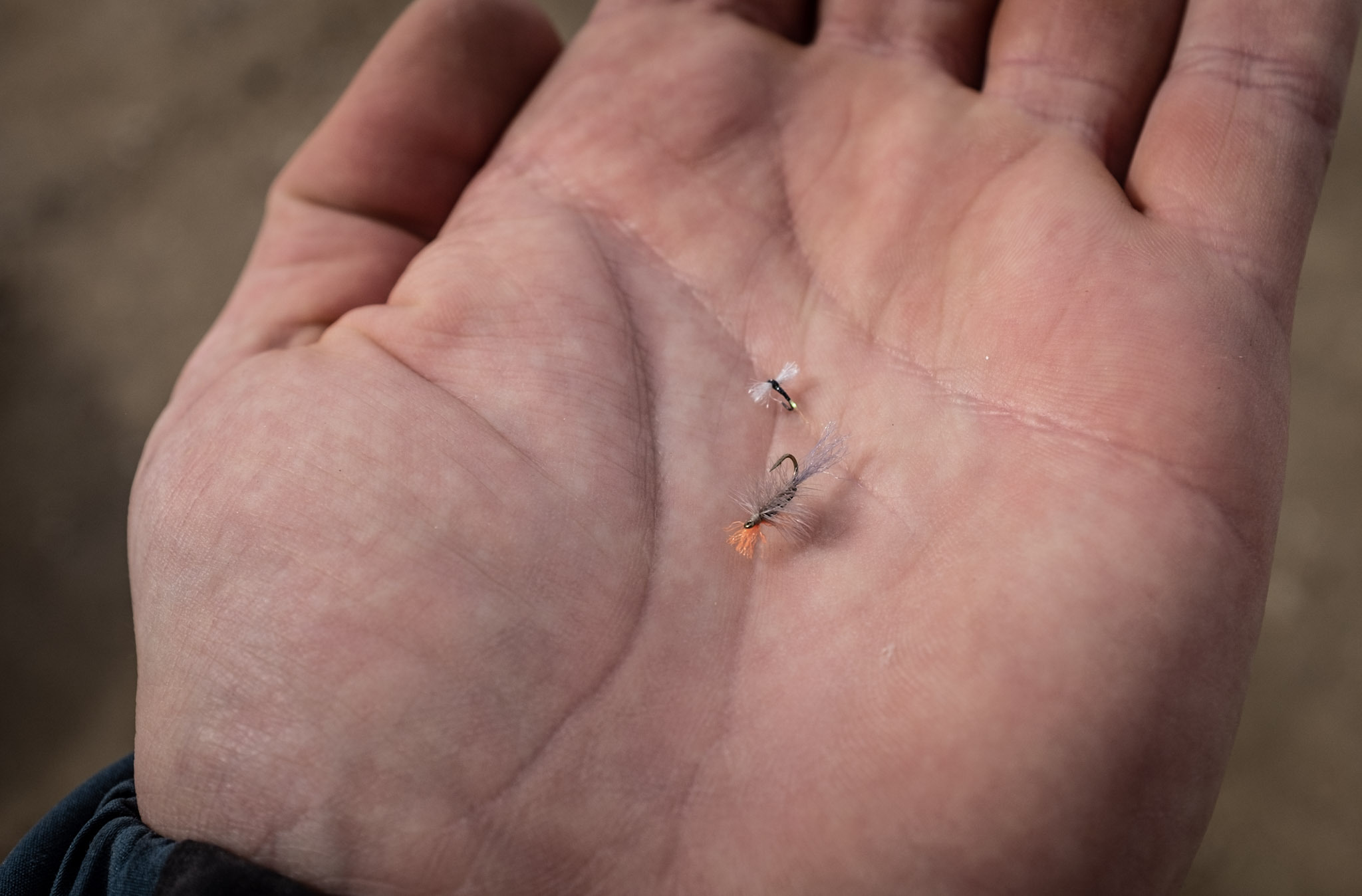
After the freshly emerged adult midges make it off the surface of the water, they congregate on the riverbanks. Midge adults are quite visible against the white backdrop of snow, and wise anglers should seek these areas out and look for signs of a hatch when out on the water. The midge mating cycle occurs when both male and female midges return to the water to form “mating clumps”, and this stage of the midge life cycle is one of the most exciting and fun to fish!
When midges are ready to mate, they will clump together in “mating balls” on the river, thus making this stage of the midge very important to very large, post spawn trout looking to gain back some muscle and fat after a very lean fall. Instead of focusing on individual flies, larger trout will eat entire clusters of midges floating down the river. Trout focused on these clusters make great targets to fly fishermen because of their willingness to eat larger midge patterns, and their consistency of feeding. The rise form of trout eating adult midges is very distinctive-often accompanied by a mouth breaking the surface, a rise form leaving an air bubble, or an audible clicking sound. This stage of feeding isn’t as consistent as we may like, but if the weather conditions hold and there is little to no wind, it can lead to some very productive fishing.
When it comes to fishing the Blue-Winged Olive hatch, it’s a safe bet that we’ll be fishing Blue Winged Olives throughout November and possibly early December as long as air and water temperatures stay favorable. As far as what to be prepared for during the Fall Blue Winged Olive hatch, Steve [Schmidt] penned a blog post about these insects a couple of years ago, and his advice and wisdom about fishing this hatch rings as true today as it did when he wrote this post:
“Generally fall baetis are smaller and darker: #20-#24. Spring BWO’s typically range from #18-#20 and are lighter in color. On any given BWO day expect to see a number of different sizes on the water. To best fish this hatch you should have a variety of sizes and patterns regardless: nymphs, dries, emergers, or all of the above. That holds true for any hatch you’re trying to have consistent success fishing."

For those interested in fishing the cycle: nymphs, emergers, adults and spinners, the nymphs of this mayfly start to be active mid morning. Blue Wing nymphs are slender, and range in color from olive to dark brown. Adults typically appear late morning and on the right day will emerge well into the afternoon. The spinners, or the egg laying stage of this mayfly, can be found in the morning and again in the late afternoon. Compared to other mayflies that are important to the western flyfisher, BWO’s are somewhat unique in this behavior.
Most mayfly spinners return to the river to deposit their eggs on the river’s surface, their lifeless forms generate some of the day’s best dry fly fishing. Unlike most mayflies, Blue Wing spinners crawl under the surface of the water and deposit their eggs on submerged rocks and vegetation. Anglers often mistakenly take fish rising to drown BWO spinners for trout taking emergers, when they’re actually feeding on the dying spinners as they drift haplessly after laying their eggs just below the surface meniscus.
For those who prefer to fish when the weather is fair, and soak the sunshine, you’ll be comfortable, but you typically won’t see the best hatches or fishing that this hatch generates. These bugs hatch best on cool, overcast and wet days. Hatches will generally last longer and be more prolific on days when there is some weather overhead. Emerging adults will struggle to dry their wings and fly off when it’s cool and damp out. Since they are on the water longer they create easy opportunities for those that lay in wait. If you enjoy casting a fly to rising trout, which is the game I choose to play, on these cloudy days BWO hatches are more prolific and a river or streams larger trout will feel more comfortable feeding, but will also have a smorgasbord of options to dine on. An overcast day will also let you fish larger tippets, and have a better chance at hooking those ultra selective trout that keep eluding you.”


Essential Gear and Flies
Your go-to 5 weight fly rod will work fine for this time of year, but like everything else in life, there are specific tools designed to handle the job with maximum efficiency. For me, an ideal fly rod for fishing the Fall-Winter hatches is an 8’6” to 9’ 3-weight or 4-weight fly rod that can make delicate presentations up close, protect fine tippets, and be able to effectively fish whatever technique that you want to. Rods that we recommend for this style of fishing have medium, to medium-fast actions. A slower action rod flexes more, and as a result takes strain off the delicate tippets and leaders that we find ourselves fishing during the colder months of the year. Rod companies such as Scott, Winston, and Sage make several rods that would make great technical fishing tools, and the best way to find any new fly rod is to cast as many as you can and see which one you like the best.
My preferred leader length and diameter for this time of year is a 9’ 5X, and I make sure to have 5X, 6X, and 7X tippets. My rules on leader and tippet are simple: If it fits through the eye of the hook, I fish it first. The frustrations resulting from fishing small flies can easily be magnified by not being able to see your tippet go through the eye of the hook, and by breaking fish off every time you set. These problems can easily be solved though by using stronger tippet. I always try to fish 6x before dropping down to 7x or lower and adjust my presentation style so that the fish will see my flies first before my more visible leader or tippet passes over them. The longer the leader you use, the better your drift and your presentation will be, and as a result more fish will eat your fly. In low, clear water fishing situations, you can never underestimate the value of a good presentation on the first cast. So make it count!

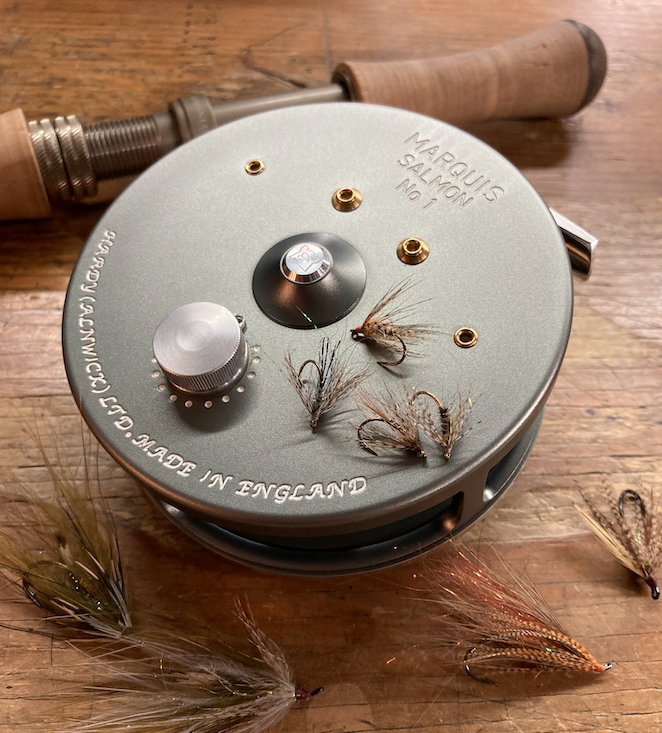
Fishing Lakes and Reservoirs
When we’re not pursuing hatches on the local tailwater fisheries, we at the shop will also spend the last couple months of the year fishing the local lakes and reservoirs with a variety of flies. From the bank or out of a boat, fishing on the “flat water” in the fall can lead to some of the biggest trout of the year, and due to the sheer size of lakes and reservoirs, it’s not too hard to spread out and find some solitude.
During the fall, fish in lakes and reservoirs will come into shallower water to forage and feed due to the cooler water temps, and that a vast majority of food in lakes and reservoirs is located in water depths of 4’-15’ feet. Why? It all has to do with sunlight, structure, and weedbeds. In water depths of 30’ or greater, there isn’t very much sunlight that makes it to the bottom. The less sun there is, the less weedbeds there are, the less food there is for the trout. Conversely, the shallower the water is, the more sunlight reaches the bottom, which in turn means more vegetation and weedbeds, which means more food for the trout, which is where they want to be: where the food is.
Fishing lakes and reservoirs can seem daunting to anglers who don’t spend a lot of time fishing them, due to what appears to be a lack of “fishy” structure. That being said, fish that live in lakes and reservoirs aren’t too different from their moving water counterparts, as they too will seek out rocky points, shelfs and drop-offs, tree lined banks or submerged logs and stumps, etc. How steep or flat the bank around a lake reservoir is, and how bright or dark the day is are very important factors to consider too. Why? Because the topography of the banks can often tell you how shallow or deep the water is, and how bright or dark the day is will determine which areas hold more fish. On those bluebird, sunny fall days, fishing where the banks are steeper is often more productive than fishing where the bank is flat, because a steep bank going into the water usually means that the water is deeper there. The deeper water allows the fish to feed closer to the shore, and not feel exposed to predators. During periods of low-light (i.e. dawn, dusk, storms, etc.) fish will move into flats and shallow bays to feed too, but will often move out once things get too bright.
Which way the wind is blowing also will influence where fish cruise and feed in every stillwater fishery. The wind pushes and funnels any and all food items into bays, or along shorelines, and fish will gather and cruise these areas looking for food that has collected there. Another thing to consider on days with wind, is to fish in a way so that the wind is aiding you, and not hindering your fishing. In short, fishing the same way the wind is blowing can reduce tangles, frustration, and help you cover the water more efficiently.
Just like “Ice-Off” fishing in the Spring, there are a variety of flies and techniques that will move fish on any stillwater fishery across the state during the Fall-Earl Winter season. Regardless of technique, one essential thing to consider is shape, size, and color of your fly. Brighter the day, clearer the water, I’d run a small bright/reflective fly, and/or a more natural colored fly. Darker the day, darker the water, I look to fish larger and more darker colored flies in purple, black, blue, etc. As far as whether to retrieve your flies quickly or slowly, that will be based on water temperatures. The colder the water is, or when there are significant changes in the weather (i.e. going from warm to cold), the more lethargic the fish will be, which means you’ll need to fish your flies slower. Cover the water, and try different speeds of retrieving the fly, but remembering to go low and slow when the weather and water are cold can make a huge difference.
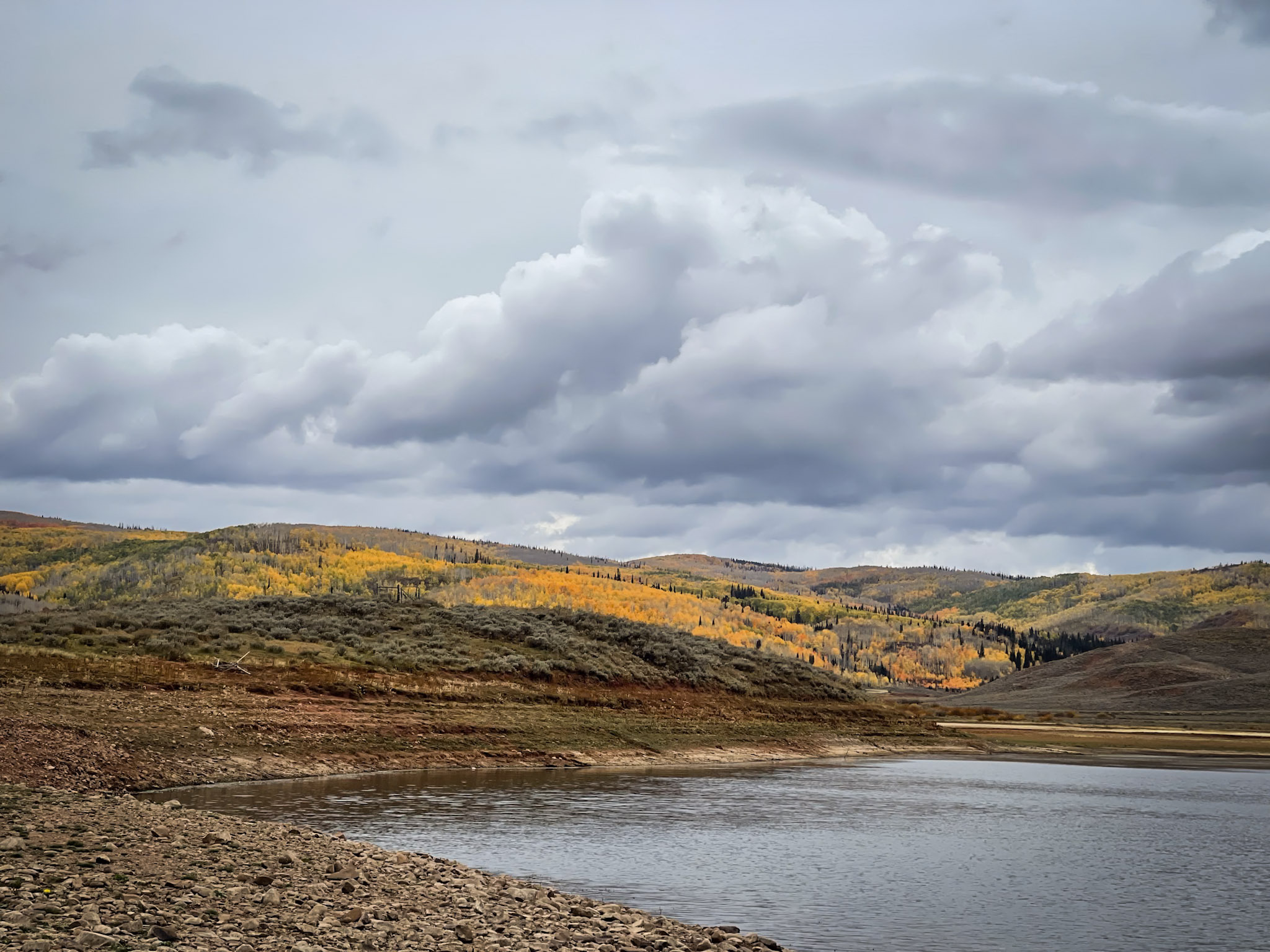
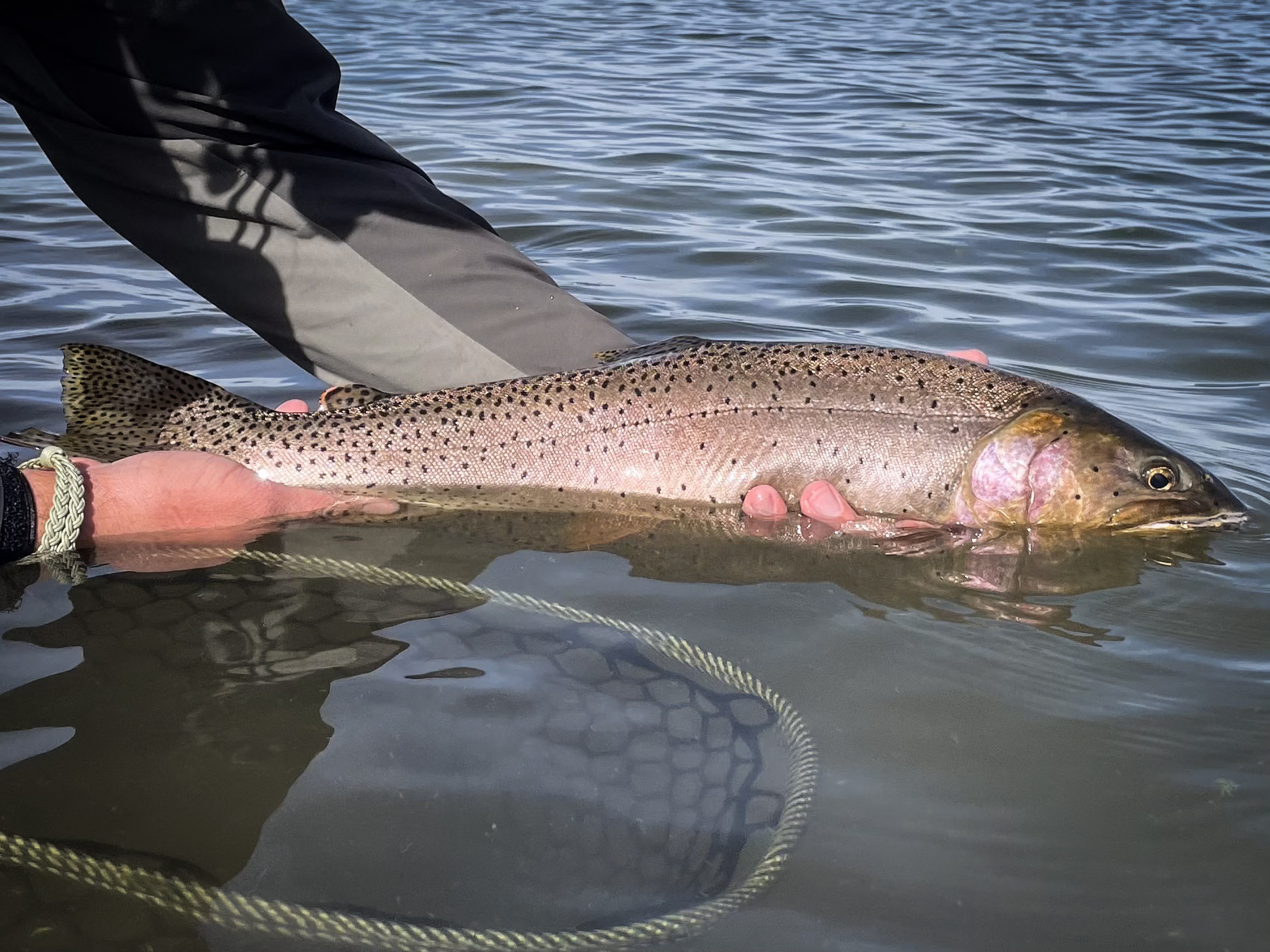
Essential Gear and Flies
The fly rod and fly lines you need will depend on the size of the flies you’re fishing, the techniques you use, and the size of the fish you’re going after. If you want to keep it simple, a standard 9’ 5 weight fly rod, a floating line, 7.5’ 0X-3X leaders and tippet, and a variety of standard attractor flies (i.e., Wooly Buggers, Zebra Midges & Chironomids, Leeches, etc.) will work for many of our local ponds, lakes, and reservoirs during this late season. Many of us in the shop, however, swear by 6 weight fly rods for most of our Stillwater fishing needs. A 6 weight rod can cast larger flies more efficiently, deal with windy conditions better, and handle the larger fish you may come in contact with. Rods in 9' or 9'6" lengths will give you the reach you want to have out there, especially if you're sitting in a tube or boat. Some of our favorite 6 weights for Stillwater fishing are the Sage R8 Core 696-4, the Winston Air 2 906-4, Scott Centric 906/4, and Orvis Helios D 906-4. If you feel like you need to get your flies down a little deeper, fishing RIO Versileaders off a floating fly line like a RIO Elite Predator, RIO Elite Gold MAX, Scientific Anglers Amplitude Textured Infinity or Scientific Anglers Amplitude Textured MPX, is more than sufficient. The fish are in shallower water, so there is rarely need to fish heavy, fast sinking flies or fly lines.
Essential fly patterns for the Fall-Winter season vary but a variety of balanced leeches, chironomids and streamers will work just about everywhere. Some of our favorite flies are the following:
- Mouse Patterns #6-#10 (For Strawberry)
- Goldie, Rusty Trombone, Geisha Articulated Streamer #4
- White/Grey, Yellow, Rusty, Olive/Black Platte River Spider #4
- Sheila Sculpin #4
- Wounded Scuplin #8
- Slum Lord #10-#14, All Colors
- Thin Mint Jig Short Stop Leech #10
- Natural, Black Hot Head Leech #10
- Olive, Black, White Sculpzilla #8
- White, Black, Olive, Root Beer Wooly Buggers #6-#10
- White, Yellow, Orange, Grey, Olive, Black, Purple Micro Dungeons #10
- Black, Purple, Olive, Red Balanced Leeches #8-#10
- Blood (Red), Zebra Jumbo Juju Chironomid #12-#16
- Zebra Midge #14-#16, All Colors
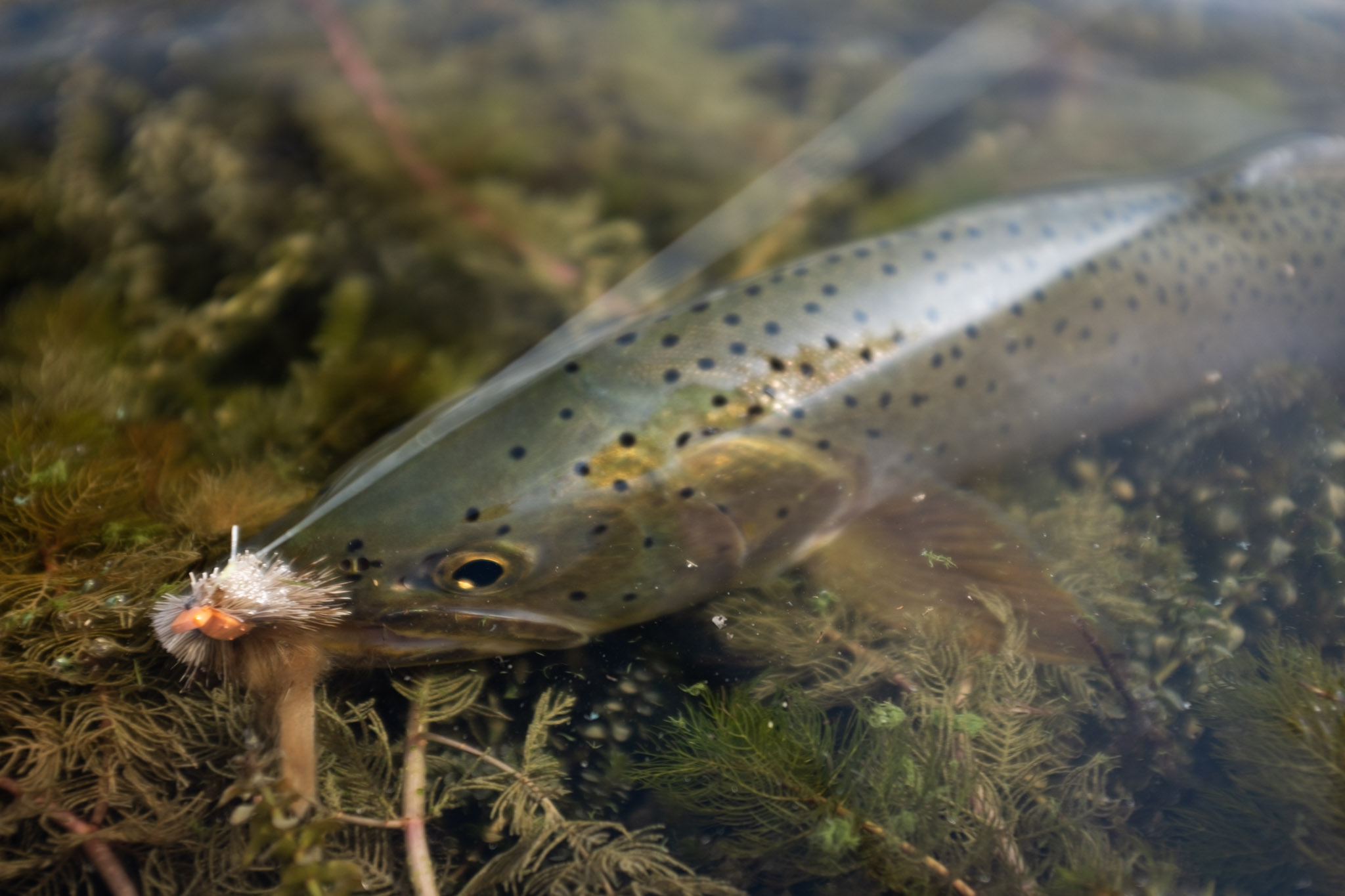

So, there you have it. Some tips and suggestions on how to get out and enjoy the last couple of months of the year. Remember to give each other space, respect spawning fish and the environment, fish barbless hooks, and be grateful for any and every day you’re on the water. If you have any questions about the fishing techniques or anything else discussed in the post, come on by the shop. We’re open at 8 AM every day of the week, and there will be a cup of coffee ready for you.
Fall Kokanee at Strawberry Reservoir. Fun to watch, not to fish for!
